Tyler — Product Designer based in Oakland, CA
AbleTo Community Journal – Deep Dive
Over the course of six months in 2022, I designed a new social experience for AbleTo’s “Self Care” app. This feature aimed to connect users through shared experiences, boost overall user engagement and satisfaction, and maintain a safe space as part of a mental health experience. I was the sole designer on this project, working with my product manager, clinical partner, tech leads, user researcher, and copywriter.

In Q2 2022, AbleTo needed to deliver on a contractual obligation to release a social feature to its "Self Care" experience. AbleTo had recently acquired Sanvello, a mental health app, and used this app as the base for Self Care.

Sanvello's community was full of messages of hatred and self-harm, and the team and I felt uncomfortable recreating this experience in a mental health app. Our clients and external stakeholders, however, were expecting a rebuild of Sanvello's experience.
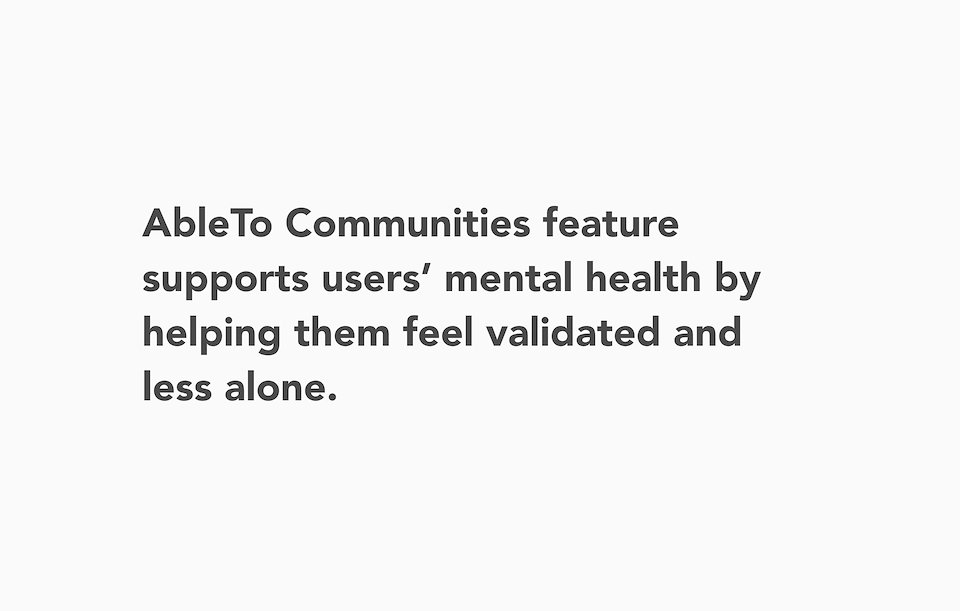
I revisited Sanvello's experience and aligned the team and stakeholders on this problem statement: The [AbleTo Communities feature] supports users' mental health by helping them feel validated and less alone. This problem statement would keep us guided and focused while designing, and help position a new experience to the stakeholders.
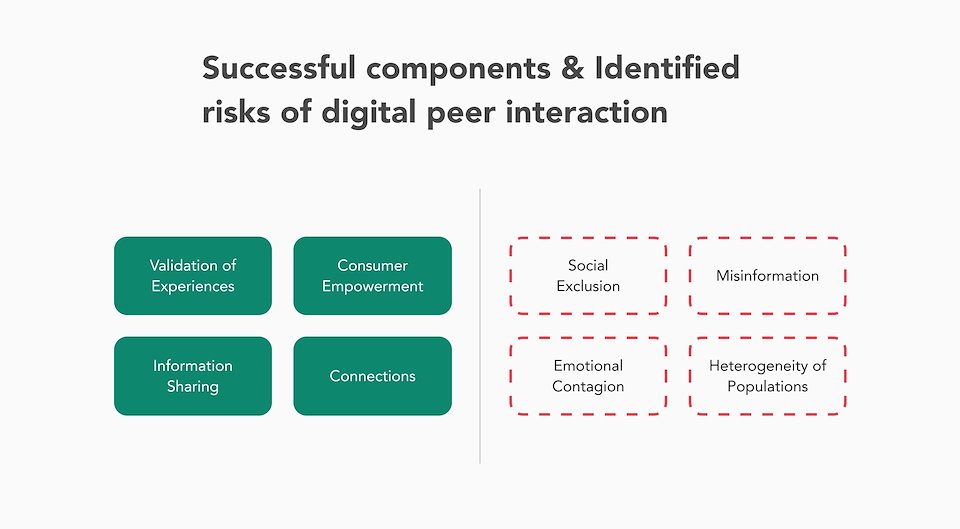
Before we explored solutions, my clinical partner and I reviewed several other health-focused social spaces. We identified user-generated content (UGC) as one of the riskiest components of a social experience and created a more general set of pros and cons for social features in mental health experiences.
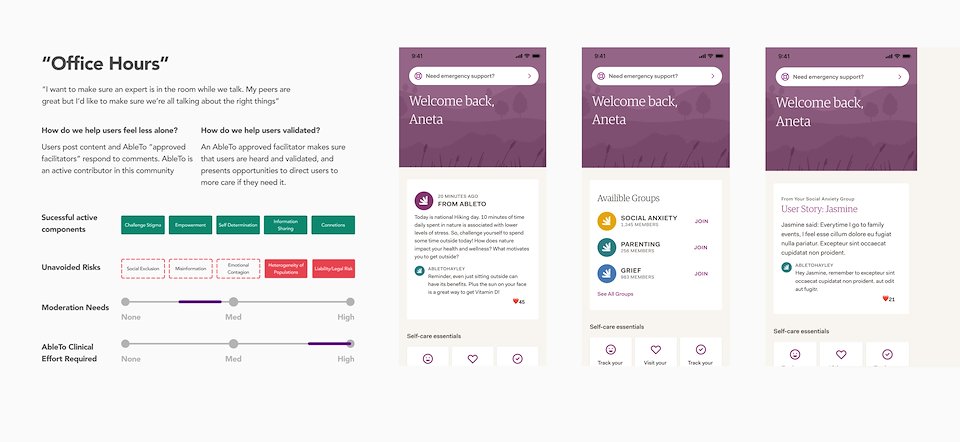
I then led the team in design exercises focused on managing our use of UGC, and three design directions emerged. I presented all three approaches to company leadership to get their thoughts on which was most appropriate for AbleTo.

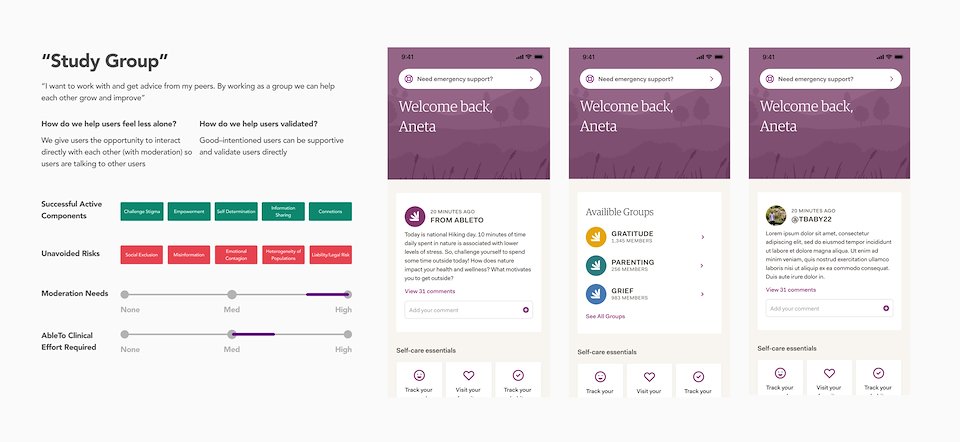
To our surprise, leadership gave a firm "no thank you" to all three directions, so we returned to the drawing board with two main pieces of feedback: lower the need for content investment and make this feature feel more like a community.

We looked back at Sanvello's data to see how users engaged with the existing feature and learned a few significant bits of information.
We learned that:
— The groups that users were interacting with were primarily positive
— This feature was only ever viewed by 3-4% of the total user base, so we would need to actively drive engagement with this feature
— User-generated content is free and can create a very cost-efficient content model
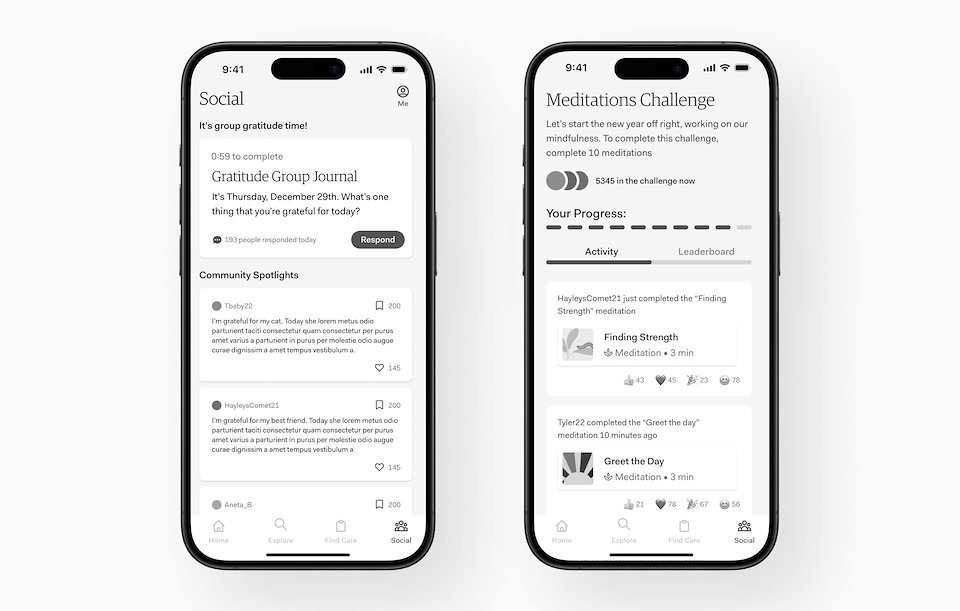
I came up with two new directions that better incorporated UGC, one centered around journaling and one centered around challenges, and ran both through user research. Our test users ranked the journal direction higher in connectedness and overall satisfaction and interest, so as a team and with stakeholder blessing, we decided to move forward with the journal direction and named it "Community Journal" (CJ).
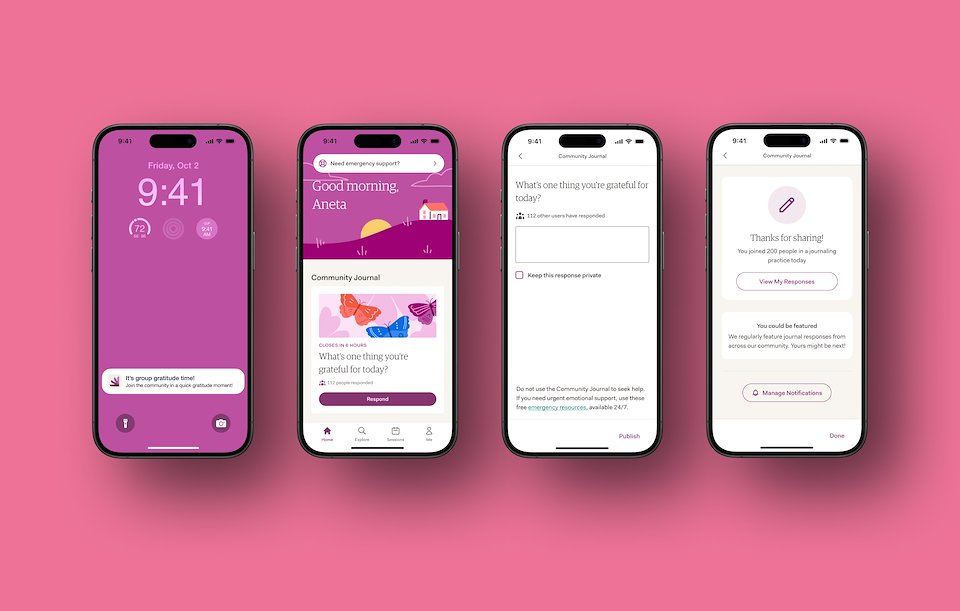
We designed CJ with three main user goals in mind: 1) Connect users 2) Boost engagement 3) achieve goals 1 & 2 with our existing staffing and content resources.

CJ prompts users with a question twice a week, focusing on "strength-based" questions to help keep responses positive. A push notification helps bring users into the app.
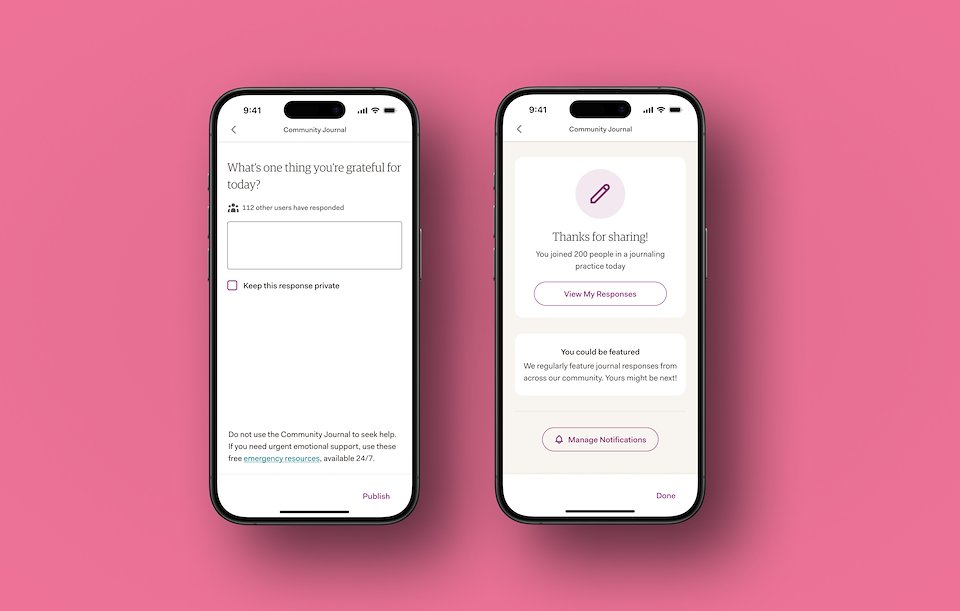
Users respond to posts with the entire AbleTo community. They can keep their posts private if they're not ready to share, letting the user participate in a way that's comfortable for them and building engagement habits and patterns.
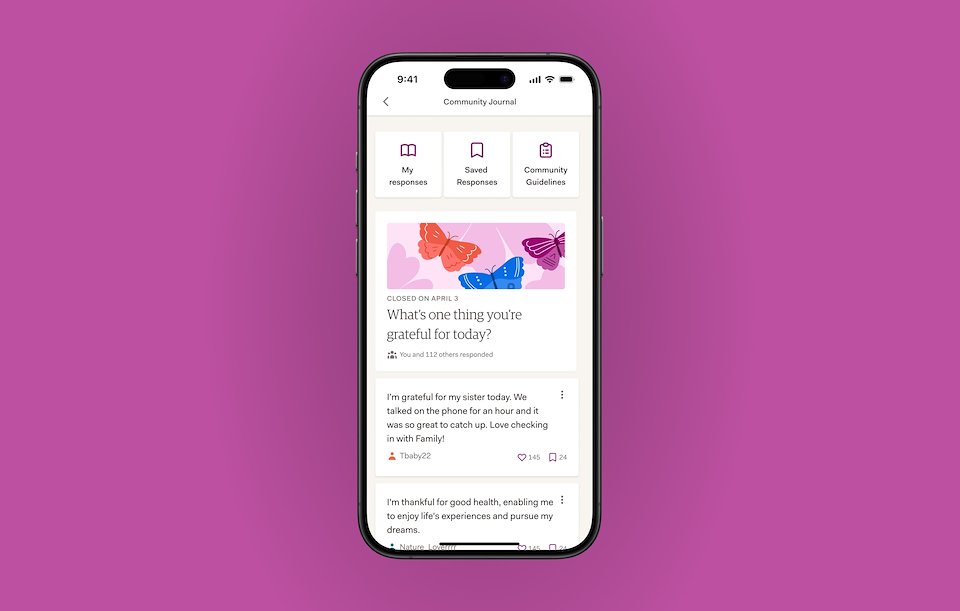
User submissions go to our moderation team, with only approved, or "Featured" entries being shown to the rest of the community. Users are notified when new featured posts are added, creating another opportunity to actively bring users back into the experience.
By treating this process more like submitting and less like posting to social media, our moderation team only needs to select a set number of posts.
CJ launched in October '23
AbleTo – Self Care Next
Fitbit's Discover Library